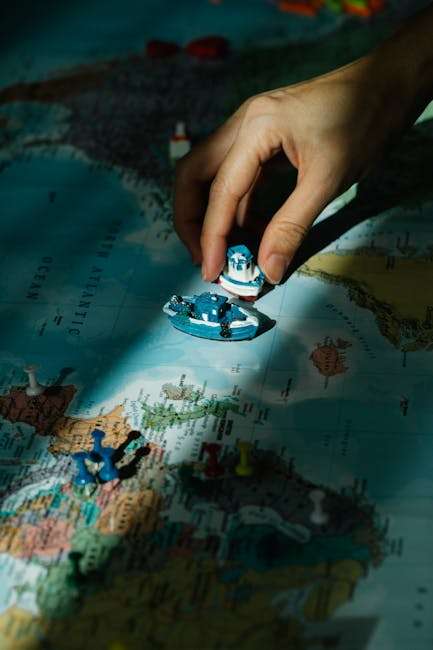The World’s Most Popular Toys and Games: A Global Perspective 🌍
In a world full of diverse cultures and unique traditions, one thing remains a constant: the universal language of play. Toys and games not only bring joy and entertainment but also serve as cultural touchstones that connect people across the globe. In this blog post, we’ll explore the most popular toys and games from around the world, offering a global perspective on the playthings that have captured the hearts of children and adults alike.
Table of Contents
1. Introduction
2. Classic Toys That Transcend Borders
3. Modern Gaming: A Worldwide Phenomenon
4. Regional Favorites: Toys with a Cultural Twist
5. The Social Impact of Toys and Games
6. Conclusion
7. FAQ
Classic Toys That Transcend Borders 🧸
Some toys have stood the test of time, bringing joy to generations across the globe. These classic toys are beloved not only for their simplicity but for the universal appeal they offer.
Lego: Originating from Denmark, Lego blocks have become a household name worldwide. These colorful bricks inspire creativity and innovation, allowing builders of all ages to bring their imaginations to life. Whether constructing a simple house or an elaborate cityscape, Lego encourages problem-solving and artistic expression.
Barbie: Since her debut in 1959, Barbie has been a cultural icon and a staple in toy boxes everywhere. With her vast array of careers and outfits, Barbie has inspired countless children to dream big, breaking traditional gender roles and encouraging empowerment.
Rubik’s Cube: This 3D puzzle from Hungary has baffled and entertained millions since the 1980s. It’s not just a toy but a challenge that requires logical thinking and patience, making it a favorite among puzzle enthusiasts globally.
Modern Gaming: A Worldwide Phenomenon 🎮
In the digital age, video games have emerged as a dominant form of entertainment, captivating players around the world with immersive experiences and innovative technology.
Fortnite: This battle royale game has taken the world by storm with its vibrant graphics, dynamic gameplay, and social interaction features. With millions of players logging in daily, Fortnite has become more than just a game; it’s a cultural phenomenon.
Pokémon: Originating from Japan, Pokémon has become one of the most successful franchises in the world. From trading cards to video games and an animated series, Pokémon has captured the imaginations of fans globally, encouraging them to ‘catch ’em all’ and explore a world of adventure.
Minecraft: With its pixelated graphics and sandbox-style gameplay, Minecraft allows players to build and explore virtual worlds without limits. Its educational potential and creative freedom have made it a favorite among children and educators alike.
Regional Favorites: Toys with a Cultural Twist 🌏
While some toys and games enjoy global popularity, others are deeply rooted in cultural traditions, offering a unique glimpse into regional heritage.
Kendama (Japan): This traditional Japanese toy involves catching a ball on different parts of a wooden stick. It’s both a fun pastime and a skillful art, often featured in competitions and street performances.
Alquerque (Middle East): Considered an ancestor of checkers, Alquerque has been played for centuries in the Middle East. This strategic game requires players to capture their opponent’s pieces, offering a blend of fun and mental challenge.
Gilli Danda (India): A traditional sport played in rural India, Gilli Danda involves a small stick (gilli) and a larger stick (danda). It’s a test of hand-eye coordination and agility, reminiscent of cricket and baseball.
The Social Impact of Toys and Games 🤝
Toys and games are more than just sources of entertainment; they play a crucial role in social development and cultural exchange.
Through play, children learn essential life skills such as teamwork, problem-solving, and communication. Toys can also serve as educational tools, teaching concepts like math, science, and language in a fun and engaging way. Moreover, globally popular toys and games foster a sense of unity and shared experience, bridging cultural divides and promoting inclusivity.
Conclusion
The world’s most popular toys and games are a testament to the universal nature of play. From timeless classics to modern digital adventures, these playthings not only entertain but also educate and connect us, transcending cultural and geographical boundaries. As we continue to innovate and embrace new forms of play, the joy and learning that toys and games provide will undoubtedly continue to shape our world.
FAQ
Q1: What makes a toy or game popular globally?
A: A toy or game becomes globally popular when it appeals to a wide audience through universal themes, encourages creativity, and offers engaging experiences that transcend cultural boundaries.
Q2: How do toys and games impact cultural exchange?
A: Toys and games facilitate cultural exchange by introducing players to different traditions and values, promoting understanding and appreciation of diverse cultures.
Q3: Are modern video games replacing traditional toys?
A: While video games are increasingly popular, traditional toys remain relevant for their hands-on play and educational value, offering a balanced play experience for children.
Q4: How do toys and games contribute to child development?
A: Toys and games support child development by enhancing cognitive skills, improving social interactions, and fostering creativity and imagination.
Q5: Can toys and games help in learning new skills?
A: Absolutely! Many toys and games are designed to teach skills such as problem-solving, strategic thinking, and motor skills in a fun and engaging way.
